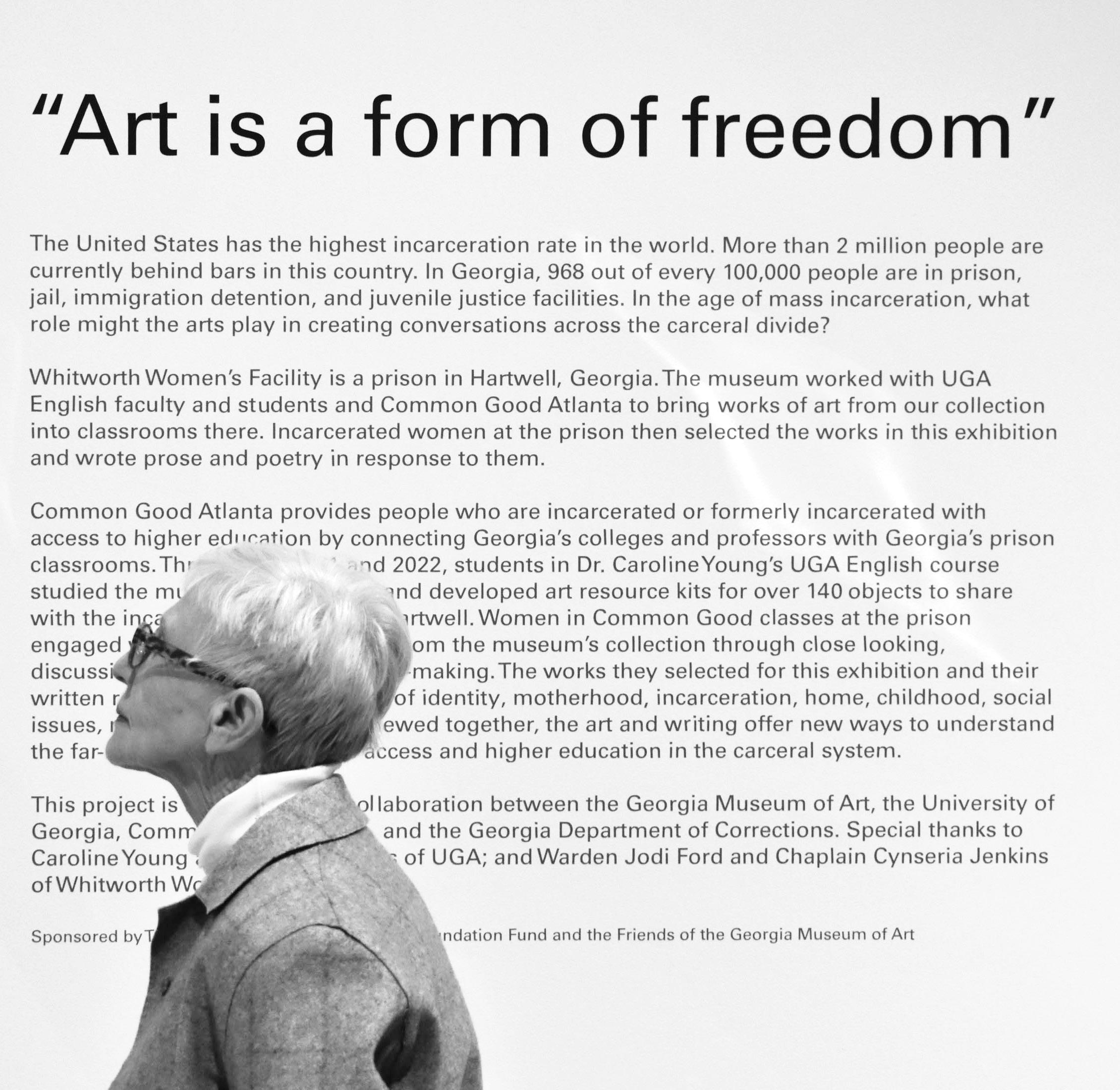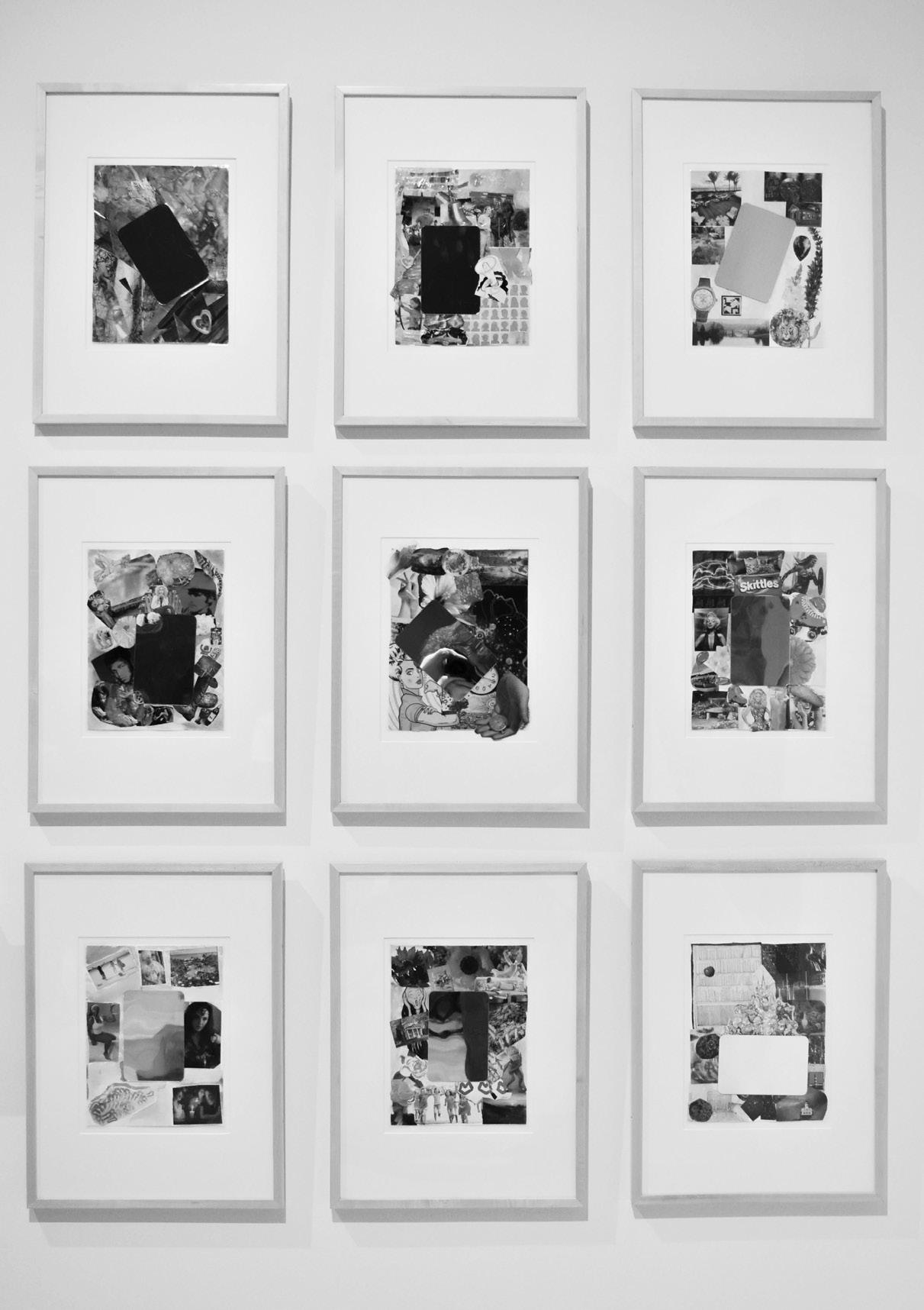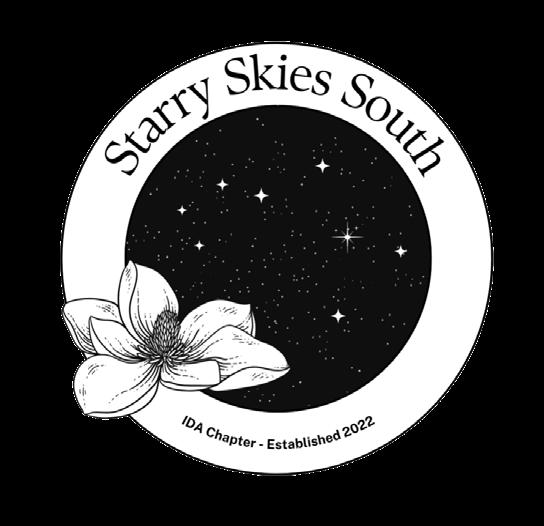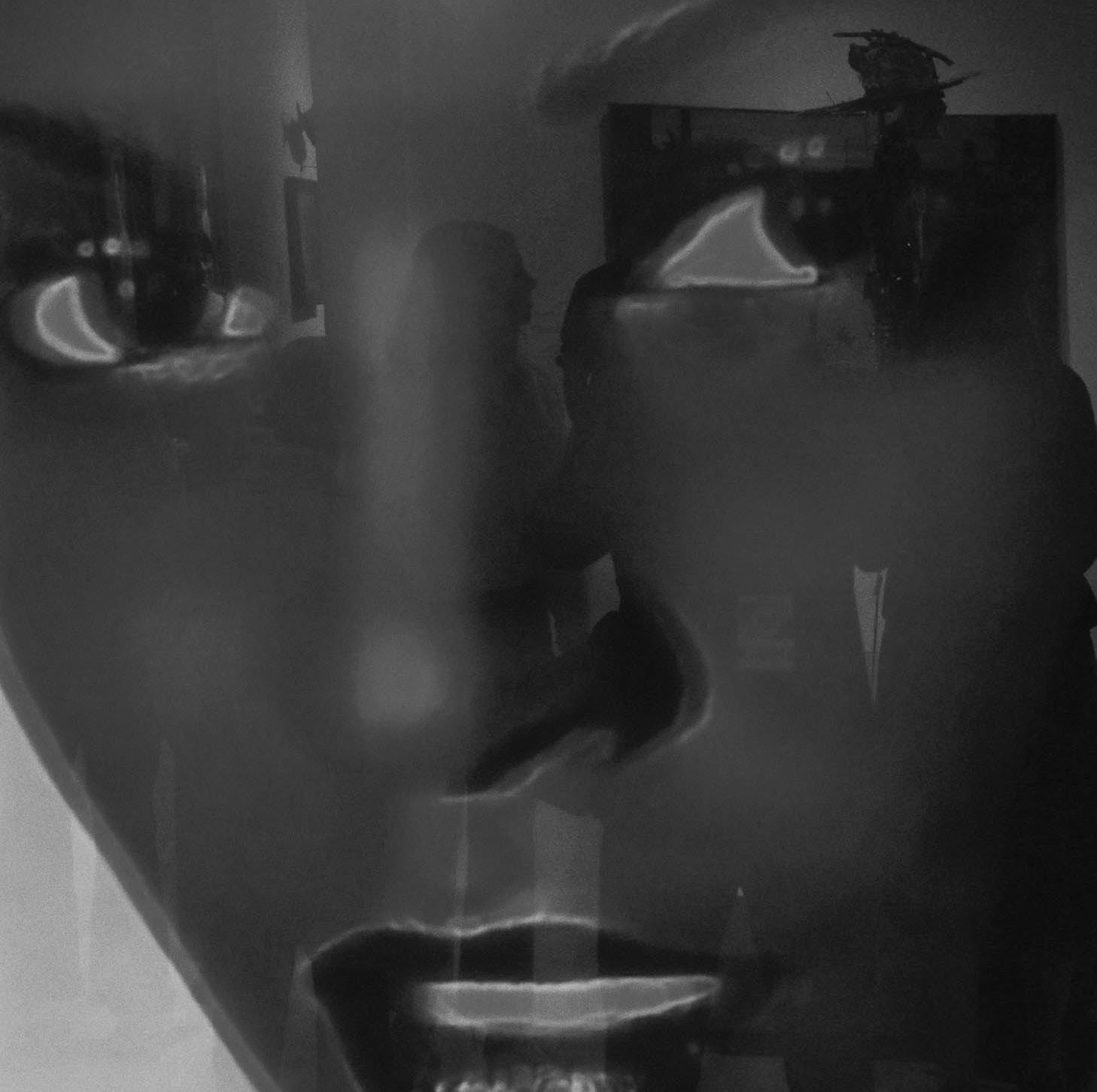
4 minute read
Freedom in expression
Incarcerated women collaborate on Georgia Museum of Art exhibition
Allison Mawn
Words emblazoned on a wall of the Georgia Museum of Art read: “People question if art is related to freedom. I personally believe that art is a form of freedom. Freedom as in you are free to express what or how you’re feeling…You can make what you believe to be beautiful, even if it’s not beautiful to anybody else.” ing for Social Justice in which she sought to bring her collaborative efforts to life once more through her students, Common Good Atlanta and GMOA. This effort has been in progress since December 2019.
The inscription is part of the “Art is a form of freedom” exhibition, a collection of pieces already belonging to the museum, accentuated with prose and poetry by approximately 22 anonymous women incarcerated at Whitworth Women’s Facility in Hartwell, Georgia.
The project has given the incarcerated women a new platform to express themselves and has created an ongoing conversation between the incarcerated, the university and Athens communities. The works and written responses highlight themes of identity, motherhood, incarceration, home, childhood, social issues, memory and mysteries.
The exhibit is the result of collaboration between GMOA, multiple departments at the University of Georgia, the Georgia Department of Corrections and Common Good Atlanta, a group that provides access to higher education to currently and formerly incarcerated people by connecting Georgia’s colleges and prisons.
“Viewed together, the art and writing offer new ways to understand the far-reaching impacts of arts access and higher education in the carceral system,” the exhibit’s description reads.
“We do a lot of collaborative projects with UGA courses and professors and students and members of the community, but we’re not always able to have an exhibition that comes out of those projects. So it was really nice to be able to do that in this case,” Steinmann said.
Art for everyone seums or art, according to a GMOA press release. According to the exhibition, more than 2 million Americans are incarcerated, and in Georgia, 968 out of every 100,000 people are incarcerated.
The art itself is as varied as the women who participated in the project — there are paintings, sculptures and prints, artists from a variety of countries and socioeconomic backgrounds and a range of subject matter. Katie Landers, a former GMOA intern, helped Young narrow down the list of possible works to focus on groups that are underrepresented in the museum’s permanent collection.
Each piece is accompanied by multiple written responses from the participants. Due to efforts to minimize harm and in accordance with the Georgia Department of Corrections’ only request for the project, the women’s names were not included in the exhibition.
In order to make the art accessible to the women at Whitworth, Young’s students created cards for each piece of work. One side showed an image of the work, and the other side included information about the work, the artist, historical context, writing prompts and a UGA student’s testimony on why they liked the piece.
According to Steinmann, GMOA’s informal slogan, “Art for everyone,” rings true through the project.
Besides the women’s written responses, the exhibition also includes nine pieces by women from Whitworth. “The Mirror Project” invited the women at Whitworth to consider the idea of reflection and create collages around mirrors from the prison commissary.
“[‘The Mirror Project’ was] a way of letting them create something that became their own signature in the absence of language,” Young said.

Due to limited space, not all the art that the women responded to was included in the exhibition. GMOA has created a booklet compiling all the works of art and responses for visitors to explore.
The exhibit invites museum visitors to engage with the idea of freedom. There is a section that provides pencil, paper and a place to hang responses to the question: “What does freedom look like to you?”
Young said that this was another way for the exhibition to bring conversation to life.
“What I love about the exhibition is that it uses art as a point of departure for us to connect with each other,” Steinmann said.
Experience the exhibit
At the heart of all this lies Young’s passion for helping people reflect and discover who they are, her love for teaching and bringing higher education to incarcerated people, and her appreciation for all those who have helped to bring this collaboration to life.
Community collaboration
The project was born from the work of Caroline Young, a lecturer in the UGA English department. Students in Young’s classes worked with Callan Steinmann, GMOA’s associate curator of education, to create art kits to share with the women at Whitworth. As part of their Common Good classes, the incarcerated women discussed, reflected on and wrote about the pieces, several of which made it into the final exhibition.
“I really saw this potential of having communities work with each other across time and space,” Young said. Young has volunteered with Common Good Atlanta since 2017. Her combination of art and incarcerated people’s writing began with a poetry class she taught at the Georgia Institute of Technology where she created an exhibition similar to “Art is a form of freedom” based on poetry from incarcerated men.
Once Young came to UGA, she began a class called Writ-
Discover & Celebrate the Night!
International Dark Sky Week
April 15-22, 2023


Learn more: https://idsw.darksky.org/

One piece is accompanied by a letter written as a group from the women to the exhibition visitors. It invites people to “allow the feelings to flow as you walk in our shoes and embark on our journeys.”
The letter accompanies a piece titled “The Blue Lady,” which, according to Young, all of the women agreed to include. The photograph is a close-up of a woman’s face in dark blue lighting, her eyes looking to the side and her lips parted. When no one could find the right words for a response to the piece, the group collaborated on a letter.

Incarcerated people do not typically have access to mu-
“I stepped foot into Whitworth Women’s Facility and all the pieces of my life fell into place,” Young said. “It’s like teaching in that space is using all of the best experience and skills that I have to offer.”
The exhibition will be available to view through July 2, but Young’s work will not stop there. Currently, she has three UGA classes with 58 students that are creating written and video responses to the exhibition.
She plans to then have her summer classes take these reviews, as well as responses from the audience participation section, and create a film capturing the full experience of the exhibition, which will be shown to the women at Whitworth.
“This is how art liberates us; it carries what we need to express,” Young said.
Throughout the exhibition’s time at GMOA, there will be multiple supplementary events. On April 18 at 5:30 p.m. in GMOA’s auditorium, 10 Common Good alum will read the work of the Whitworth women who can’t be there to read it themselves.








